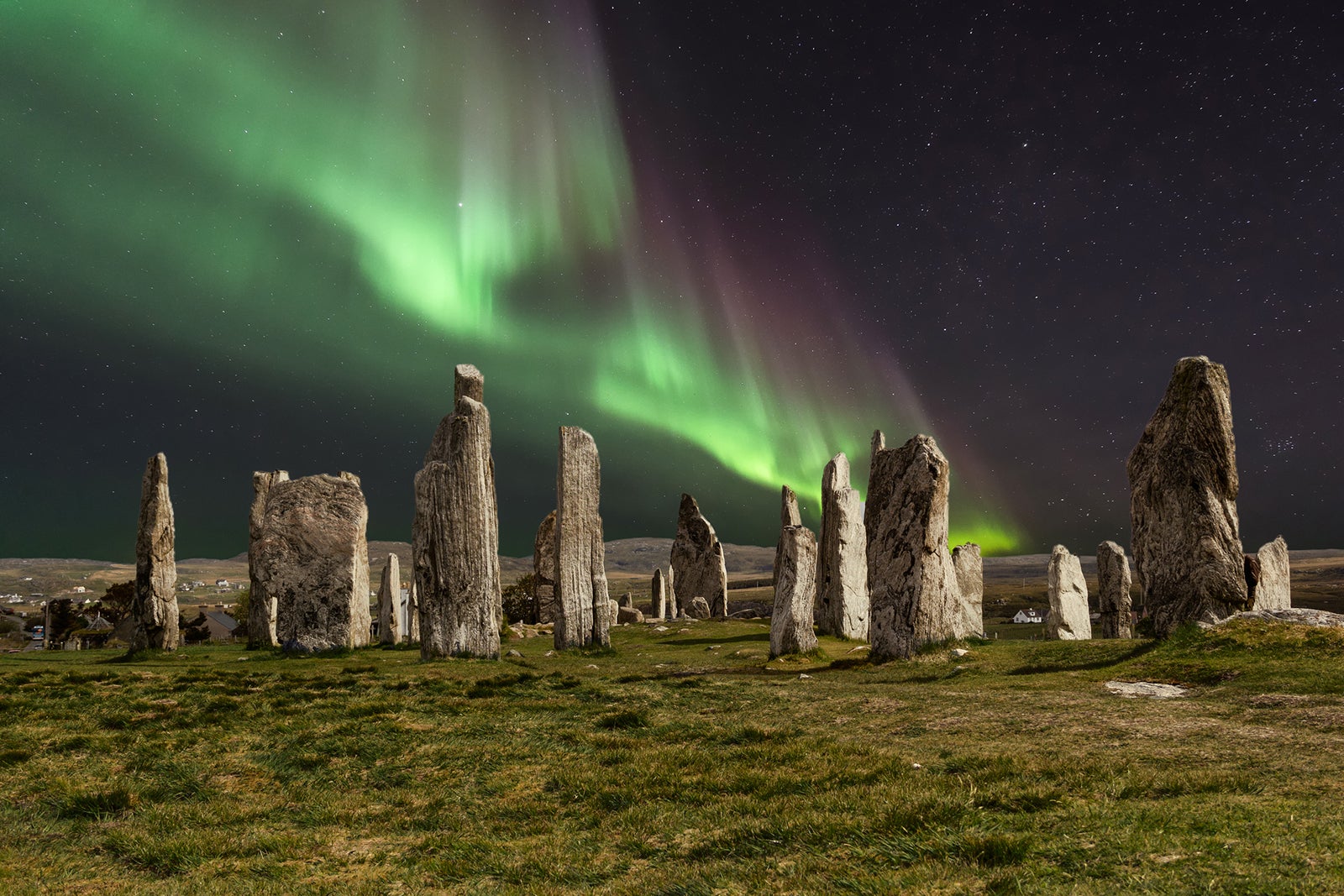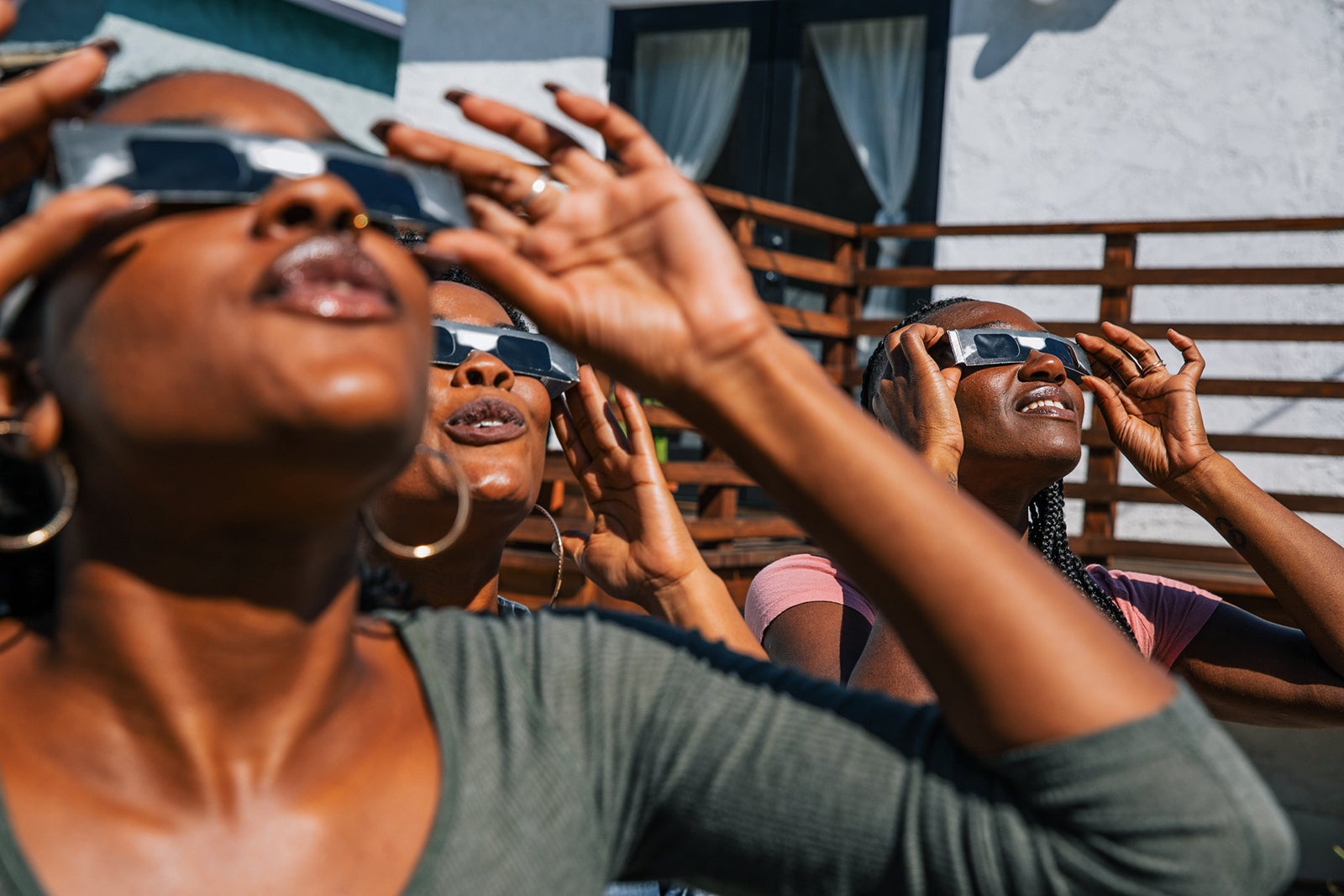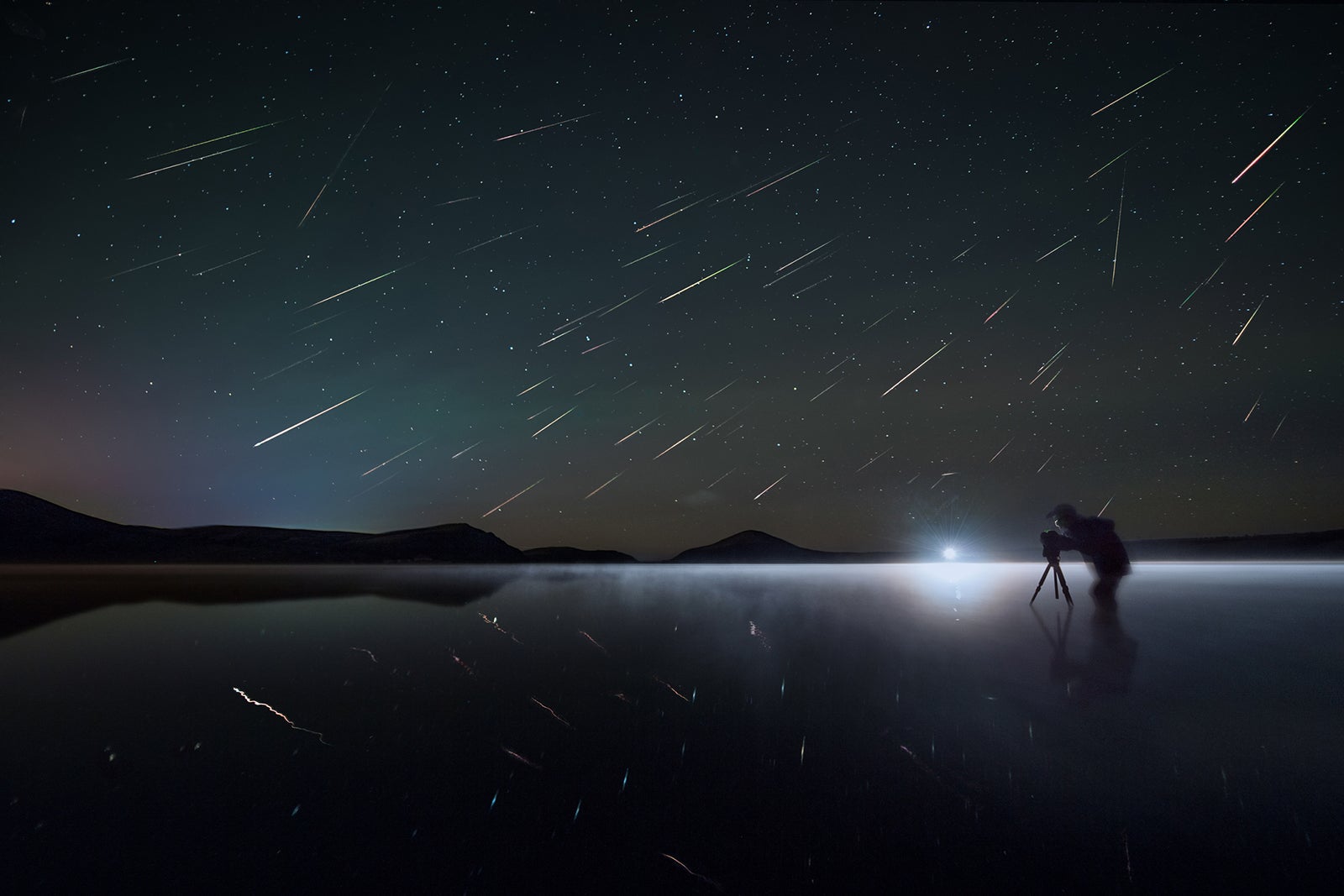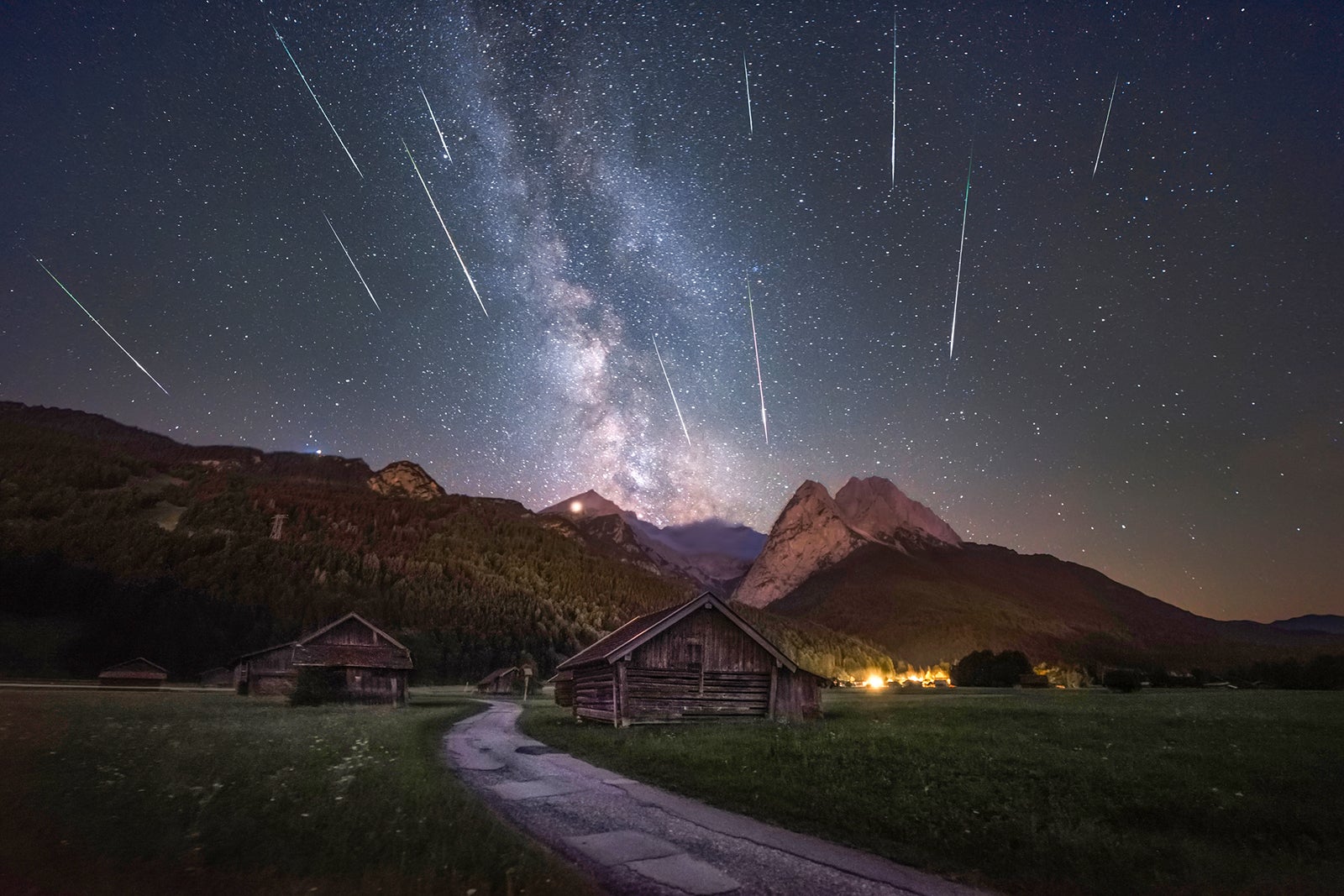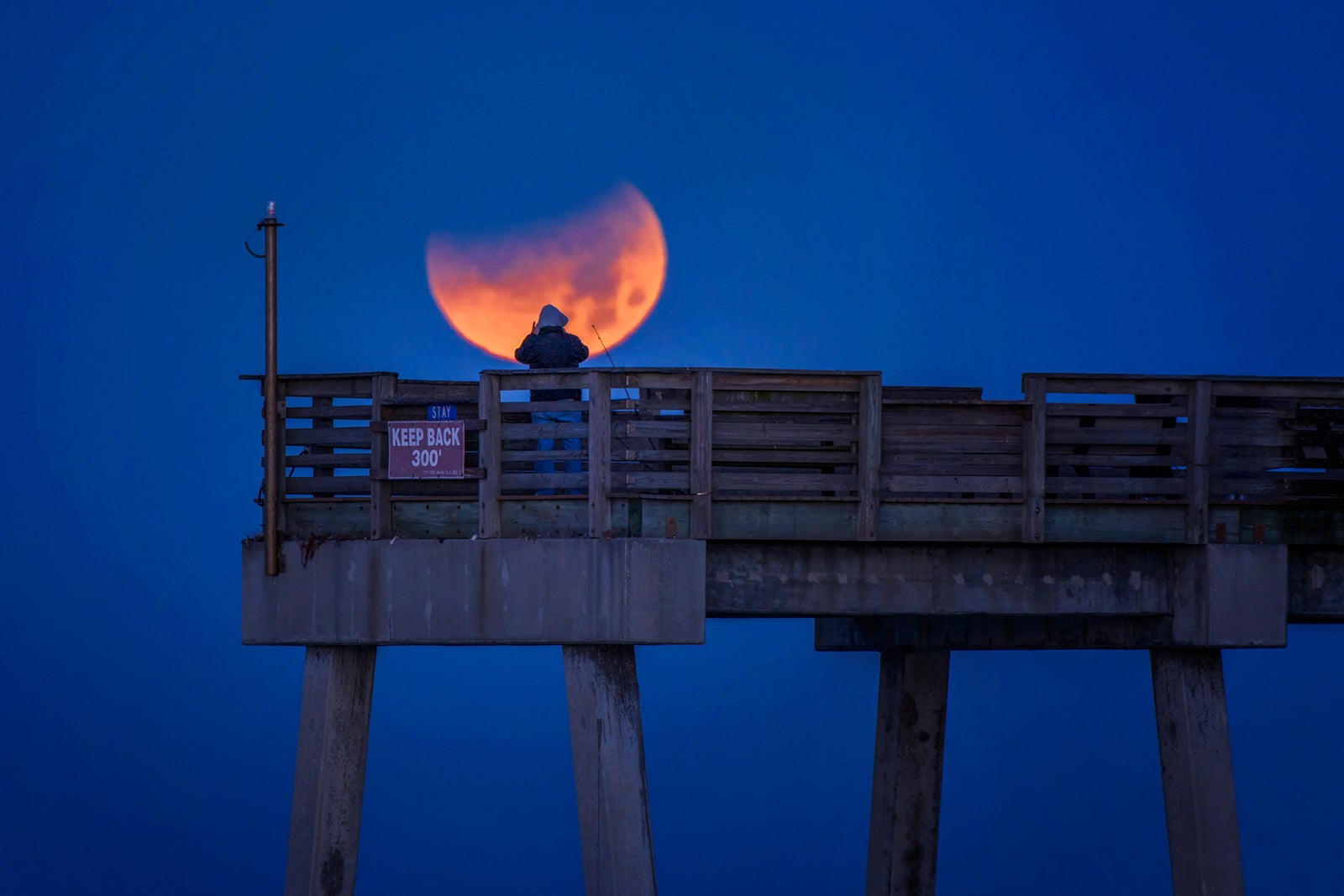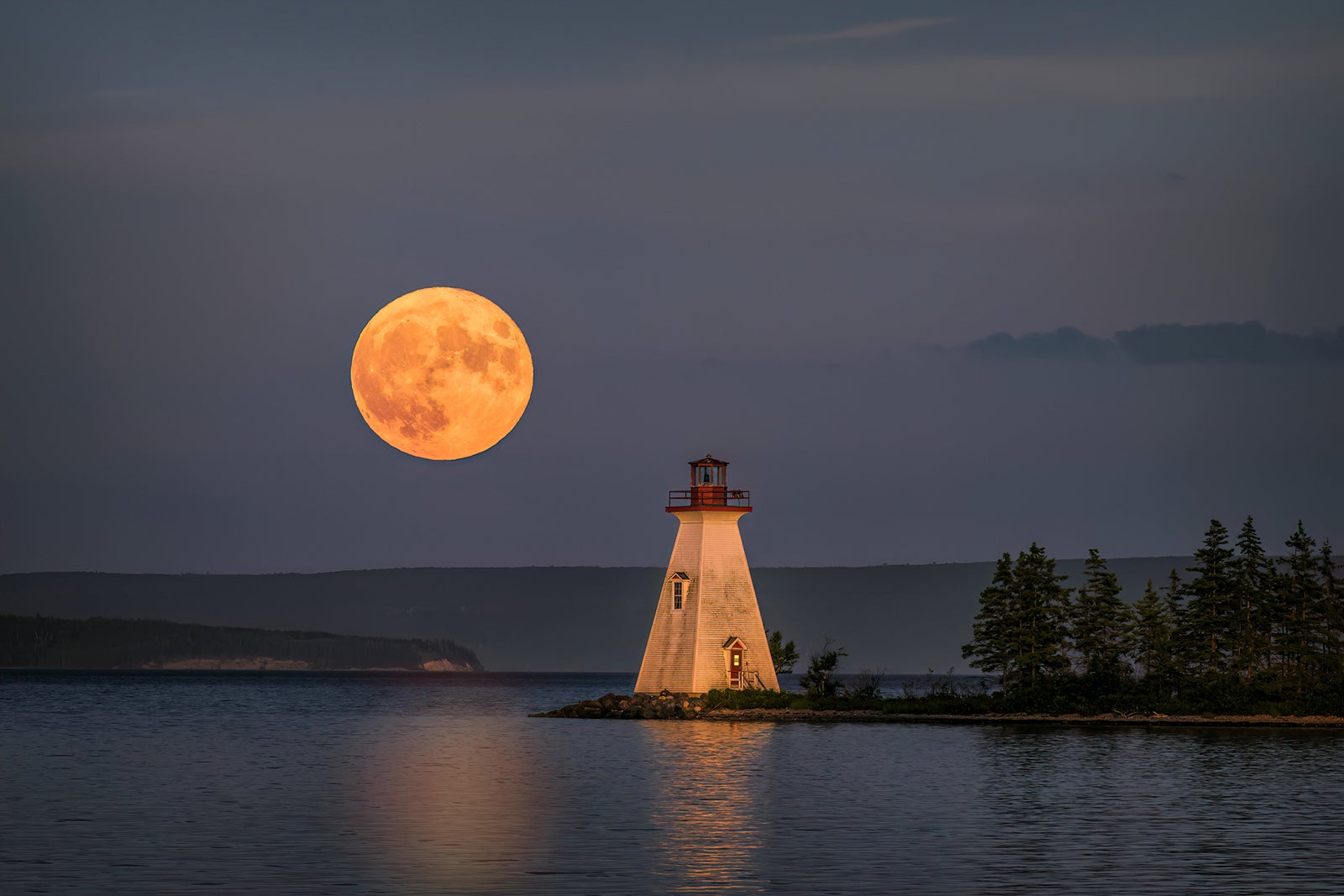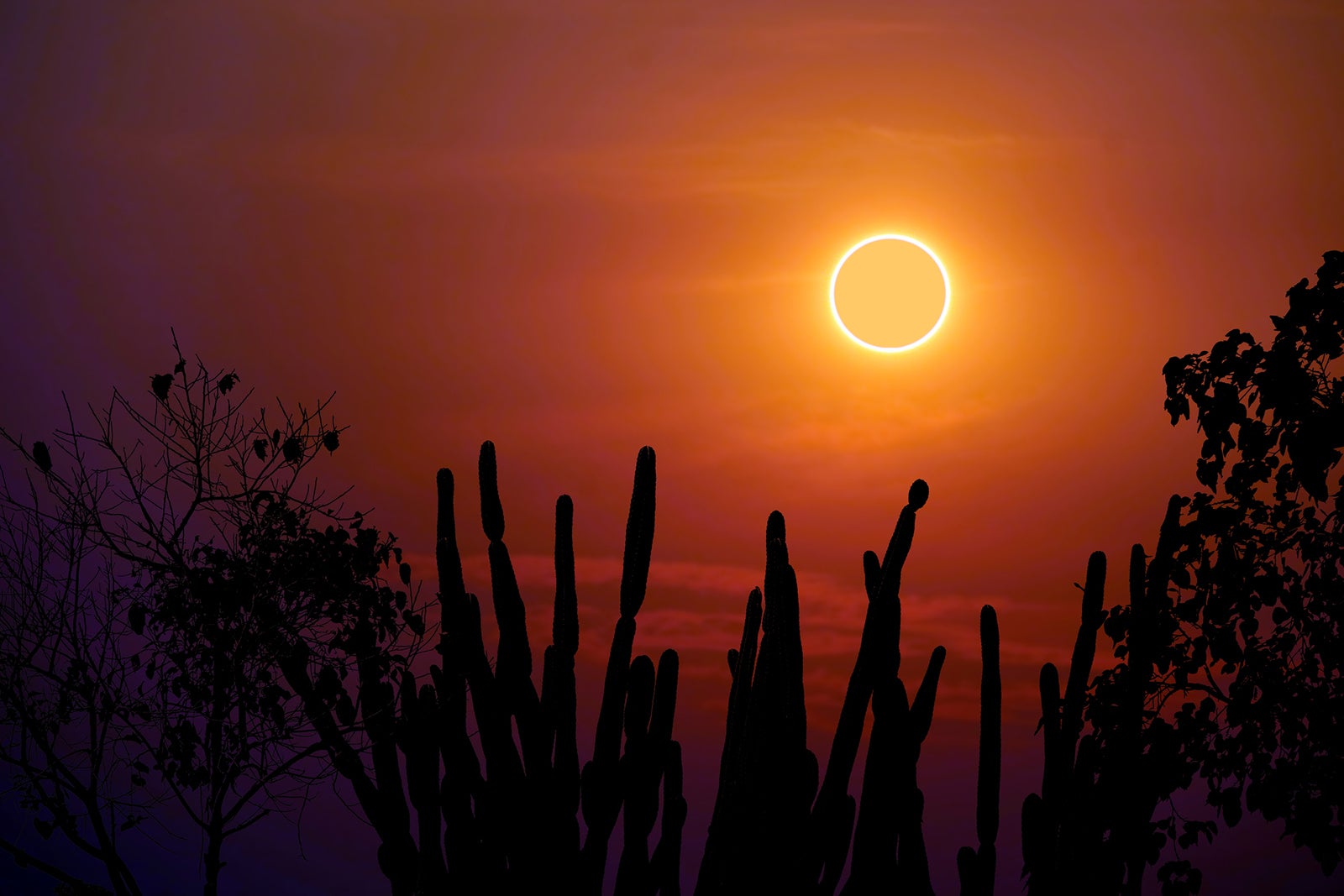With a once-in-a-generation total solar eclipse in April, it’s shaping up to be a banner year for celestial activity in the U.S.
Interest in the eclipse is heightening awareness of other celestial activities, such as meteor showers, supermoons and partial lunar eclipses — many of which happen annually.
These stellar activities can also motivate travelers to visit wonderful destinations that may or may not have made their lists until now. In Texas, the total solar eclipse will cast its otherworldly aura on no fewer than three major cities in the Lone Star State and many towns and wide-open expanses in between. In Finland, the aurora borealis (northern lights) is expected to be particularly striking this year and next.
Michelle Thaller, astronomer and communication scientist at Goddard Space Flight Center, hopes more amateur astronomers will be born as the wonders of our solar system and beyond become increasingly entwined with such issues as sustainability, climate change and our place in the universe.
“We live in an environment full of solar flares and comets and asteroids coming around, and there are many ways to feel connected to our larger environment,” Thaller said.
Here are 11 reasons to search the stars in 2024 (and one bonus reason in 2026).
Approach to solar maximum and the auroras
When: Ongoing
Solar maximum isn’t a single event. Every 11 years, the sun naturally switches its magnetic poles; just like Earth, the sun has a north and south pole. As the sun approaches the switch, known as solar maximum, the sun becomes more and more active. We are now in this period where the atmosphere of the sun, the corona, is beginning to eject trillions of tons of hot hydrogen gas.
“These big loops of hot gas that are many, many times the size of the earth can go any way in space, but some of them can come toward the earth,” Thaller said.
As the material flies into space and interacts with our atmosphere, it increases the chance of dramatic northern and southern lights known as the auroras, Thaller said; auroras form when solar winds made of sun particles upset atmospheric gases.

Daily Newsletter
Reward your inbox with the TPG Daily newsletter
Join over 700,000 readers for breaking news, in-depth guides and exclusive deals from TPG’s experts
Where to see it
Thaller believes the uptick in solar activity will last for the next one to two years. While seeing the auroras is never guaranteed, there’s a better chance than normal this year and next year. There may be no better time to view the northern lights than this winter in destinations like Finland and Iceland.
Related: 10 best places to see the northern lights
In Finland, the best time to see the aurora borealis is early fall to late spring. The northern lights are visible in Finland’s northernmost region roughly 200 nights a year. Luxe accommodations — from insulated domes to glass huts — have been built with prime viewing in mind. For example, the elevated accommodations at the Arctic TreeHouse Hotel offer floor-to-ceiling glass windows with panoramic views.
Total solar eclipse
When: April 8
Millions of Americans will be able to see the upcoming total solar eclipse passing over North America, including through Texas, the Midwest, New York and Maine.
During a total solar eclipse, the moon completely covers the sun, with only the corona visible on the edges. Thaller, who has seen six total solar eclipses to date, said each one is different but unforgettable.
“You’ll never feel anything quite so naturally dramatic. Your instincts go wild because everything starts getting cooler, everything gets quiet, and the sky starts to look strange and then differently colored,” Thaller said.
Related: Where to go in 2024: The 16 best places to travel
Strings of gas will surround the dark hole in the sky and, depending on your location within the path of totality, it will be possible to see planets like Venus and Mercury and a 360-degree sunset, Thaller said. Viewers may be able to see totality for up to four minutes and 28 seconds.
Where to see it
The best place to see the total solar eclipse is the 115-mile-wide band known as the path of totality. The eclipse path in the U.S. begins in Texas and travels through more than a dozen states, including Illinois, Ohio, Pennsylvania, New York and Vermont.
Indianapolis — where the Indianapolis Motor Speedway and NASA are hosting a joint viewing party — still has a number of downtown hotels with availability April 8. One option is the Fairfield Inn & Suites Indianapolis Downtown.
Wear eclipse glasses to protect your eyes. It is safe to remove them once the sun is completely behind the moon.
Related: Best hotel packages for the 2024 solar eclipse
Lyrid meteor shower
When: April 21-23
A meteor shower is a cloud of particles left in the path of a comet. The earth passes through these debris trails each year. As the comet fragments collide with our atmosphere, they create fiery streaks visible in the night sky, even though they are pebble-sized. It’s possible to see about 30 meteor showers yearly, including the Lyrids, which peak in late April.
The Lyrid meteor shower sighting was recorded in China in 687 B.C. The Lyrids don’t tend to leave those glowing dust “trains” as they streak through the earth’s atmosphere, which we typically associate with meteor showers. However, they can produce bright flashes called fireballs, large explosions of light and color.
Where to see it
The best views of the Lyrids are from the Northern Hemisphere after moonset and before dawn. This year’s shower may not be particularly plentiful. Still, amateur astronomers should be able to see one meteor streak across the night sky every five minutes April 21 if they’re in a very dark place.
Eta Aquarid meteor shower
When: May 6
The pieces of debris that interact with our atmosphere to create the Eta Aquarids are from the world’s most famous comet — Halley’s comet, which Edmund Halley discovered in 1705. The comet was also featured in the Bayeux Tapestry in France. It takes about 76 years for the comet to orbit the sun once.
The last time casual observers saw Halley’s comet was in 1986, but viewers can see the speedy Eta Aquarids peak during early May each year. About 30 Eta Aquarid meteors can be seen per hour during their peak. “I love meteor showers because they’re a chance to interact with our larger solar system that we don’t usually think about,” Thaller said.
Meteor showers are usually named after the constellation they appear to come from, which helps viewers determine which shower they are looking at. The Eta Aquarid’s radiant is the constellation Aquarius, the water bearer.
Where to see it
The Southern Hemisphere is better for viewing the Eta Aquarids because Aquarius is higher up in the sky than in the Northern Hemisphere. So, it’s possible to see more meteors per hour.
Perseid meteor shower
When: Aug. 11-12
The plentiful Perseid meteor shower, peaking in mid-August, is considered a must-see event for celestial seekers. The Perseids often leave streaks of light and color behind them as they rocket through Earth’s atmosphere. Viewers can see 50 to 100 meteors per hour. Warm summer weather allows skywatchers to view them comfortably at night.
The Perseids are also known for impressive fireballs. The Perseids will coincide with a moonless sky this year, making for great viewing.
Where to see it
The Perseids should be viewed in the Northern Hemisphere during the early morning predawn hours, though it is sometimes possible to see meteors from this shower as early as 10 p.m.
Certified “Dark Sky” destinations like Utah’s Bryce Canyon provide optimal Perseid meteor shower viewing conditions. For outdoorsy travelers looking to explore some of the West’s most iconic landscapes by day and stargaze by night, five Under Canvas camps (Grand Canyon, Moab, Zion, Lake Powell-Grand Staircase and Bryce Canyon) were recently officially recognized as the world’s first Dark Sky certified resorts. Under Canvas is known for its high-end safari-style tents, resort-style amenities, community vibes and low light pollution.
At each of the camps, guests can further their knowledge of the cosmos through the brand’s new “We Own The Night” programming, which includes astronomy talks, full-moon hikes, star bathing meditations and celestial-inspired cuisine.
Related: Check out these hotels for stellar stays during the Perseid meteor shower
Supermoon with partial lunar eclipse
When: Sept. 18
In September, a supermoon — which happens when the moon is the closest to Earth — will be accompanied by a partial lunar eclipse.
Lunar eclipses happen when there’s a full moon and the earth is positioned between the moon and the sun; the earth’s shadow falls on the moon’s surface, dimming it and sometimes turning the surface red.
In late September, Americans can view a partial lunar eclipse, an imperfect alignment of the sun, Earth and moon that results in the moon’s passing through only part of the earth’s umbra. The shadow grows and then recedes without ever entirely covering the moon.
Where to see it
The supermoon will be easy to spot from anywhere, but the partial eclipse will be visible in the Americas, Europe, Africa and parts of Asia. In Mesa Verde National Park, visitors can view the lunar event just as ancient Puebloans once did.
Annular solar eclipse in South America
When: Oct. 2
During an annular eclipse, the new moon moves in front of the sun, but the corona is still visible around the edges. This is why this eclipse is often called the “ring of fire” solar eclipse. On Oct. 2, South America will have an annular solar eclipse. The maximum duration of annularity for this eclipse is seven minutes and 25 seconds. During an annular eclipse, the sky takes on an eery twilight cast.
Where to see it
To experience the “ring of fire” phase of the eclipse, viewers must be within the path of annularity. It will cross over Argentina, Chile and Easter Island — seeing the annular eclipse from the UNESCO-protected island known for its monumental statues is one for the bucket list.
The Nayara Hangaroa resort is already the gateway to the island’s mysterious culture and beauty, and now it will offer the most comfortable confines for viewing the eclipse. In the U.S., Hawaii will experience a partial solar eclipse.
Comet Tsuchinshan-ATLAS
When: Oct. 12
Comet Tsuchinshan-ATLAS was discovered in China at the Purple Mountain Observatory in January 2023. At first, astronomers thought it was an asteroid. However, further viewing with telescopes confirmed it was a comet with a tail — or incandescent bits of debris in the wake of the meteor.
Astronomers believe the comet with a greenish cast has come from trillions of miles away. Astronomers will get another glimpse when it may be visible to the naked eye in mid-October, but how bright it will be is unknown. Thaller said if there’s a big outburst when it comes around, it could be as bright as a Big Dipper star, or it might just be a smudge in the sky.
Where to see it
Comet Tsuchinshan-ATLAS will be best viewed in dark places in the Northern Hemisphere.
Hunter’s Moon
When: Oct. 17
The most spectacular supermoon of the year will be the Hunter’s Moon in mid-October. The name dates to 1710 and refers to fall being the season for hunting. Native Americans also have many names for this moon: the Travel Moon, the Dying Grass Moon and the Sanguine or Blood Moon.
Supermoons are when a full moon occurs at its closest point (known as perigee) to Earth during its 27-day orbit. There’s no doubt that a supersized moon (up to 14% larger and 30% brighter than when it’s at its farthest point from Earth, according to Space.com) with a slightly reddish cast is dazzling.
Where to see it
The Hunter’s Moon should be impressive in the Northern Hemisphere as long as there’s a clear night sky and viewers are in a location with an unobstructed view.
Orionid meteor shower
When: Oct. 21-22
The Orionids, the second meteor shower of the year to derive from famed Halley’s comet, peak during mid-October each year. Orionid meteors are known for being bright and fast, traveling at about 148,000 mph into Earth’s atmosphere. Fast meteors are likelier to leave glowing “trains” lasting for several seconds to minutes and fireballs.
When viewing the Orionids, keep your eyes peeled for prolonged explosions of light. The Orionids are also framed by some of the brightest stars in the night sky, lending a sparkly backdrop.
Where to see it
The Orionids can be seen in the Northern and Southern hemispheres after midnight. Seek out an area away from city and street lights, and come prepared with a sleeping bag or blanket. Lie on your back, feet facing southeast if you are in the Northern Hemisphere or northeast if you are in the Southern Hemisphere, and enjoy the show.
Geminid meteor shower
When: Dec. 14-15
The Geminids meteor shower, peaking during mid-December each year, is considered one of the most reliable annual meteor showers.
The Geminids first began appearing in the mid-1800s. Since then, it has grown into a significant meteor shower with 120 Geminid meteors visible per hour under perfect conditions. Most meteor showers originate from comets, but the Geminids come from a parent asteroid: 3200 Phaethon. It takes 1.4 years to orbit the sun once. The yellowish Geminids, which appear to come from the constellation Gemini or the “Twins,” are bright and fast.
Where to see it
The Geminids should be viewed during the night and early morning hours and are visible across the globe. The shower starts around 9 or 10 p.m.
Future event: Total solar eclipse
When: Aug. 12, 2026
While another total solar eclipse won’t occur in the contiguous U.S. until 2044, celestial seekers will have the opportunity to see the otherworldly phenomenon again in 2026.
On Aug. 12, 2026, a total solar eclipse will occur in Europe, Greenland and Russia. The length of totality for this eclipse will be two minutes and 18 seconds.
In some locations, the eclipse will happen low on the horizon just one hour before sunset, creating intensified atmospheric scattering and the most epic sunset imaginable. It’s also worth noting that many states in the U.S. will experience a partial solar eclipse.
Where to see it
The path of totality in Europe crosses over Iceland, Spain and Portugal. Northern Spain will be a spectacular viewing location, and events with eclipse meteorologists at sites like hilltop wineries are already planned.
